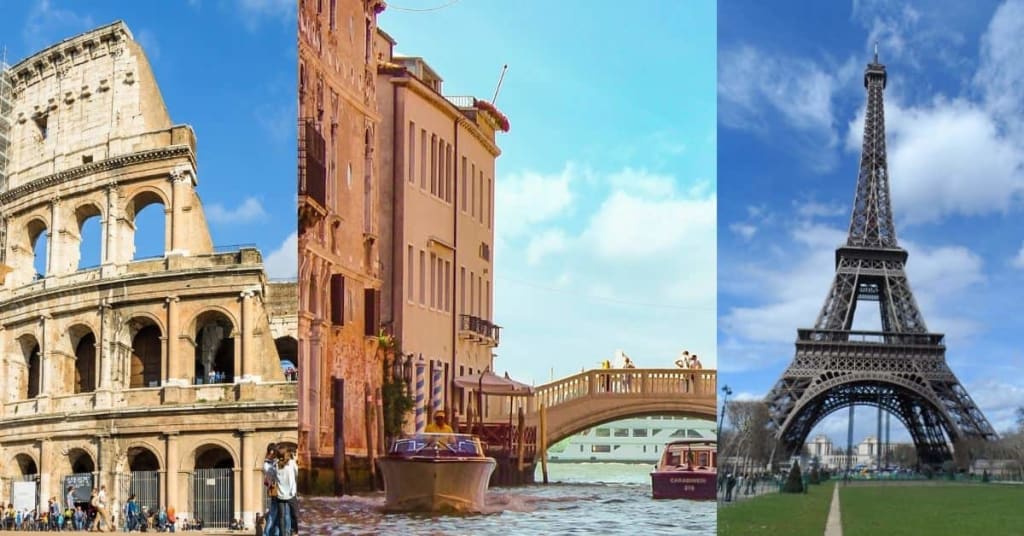TEN NATURAL TOURIST DESTINATIONS THAT ARE ABOUT TO DISAPPEAR
The Great Barrier Reef, Australia: Known as one of the world's most magnificent coral reefs, the Great Barrier Reef is facing severe bleaching due to rising ocean temperatures.

As climate change continues to have a profound impact on our planet, many natural tourist destinations are facing the threat of disappearing forever. From melting glaciers to vanishing coral reefs, these once vibrant and beautiful locations are at risk of being lost. Here are ten natural tourist destinations that are about to disappear if immediate action is not taken to preserve them.
1. The Great Barrier Reef, Australia: Known as one of the world's most magnificent coral reefs, the Great Barrier Reef is facing severe bleaching due to rising ocean temperatures. Unless drastic measures are taken to reduce carbon emissions and protect the delicate ecosystem, this breathtaking natural wonder could vanish within decades.
2. The Maldives: This archipelago nation is known for its pristine beaches and turquoise waters. However, the rising sea levels caused by global warming pose a significant threat to the Maldives, as it is one of the lowest-lying countries in the world. Without urgent action, this paradise could be submerged underwater in the near future.
3. The Amazon Rainforest, South America: Often referred to as the "lungs of the Earth," the Amazon Rainforest is under constant threat from deforestation and illegal logging. As large portions of this vital ecosystem are destroyed, the loss of biodiversity and disruption to the water cycle could have devastating consequences for the entire planet.
4. The Arctic: As the polar ice caps continue to melt at an alarming rate, the Arctic is undergoing significant changes. The loss of sea ice not only affects the unique wildlife and indigenous communities that call this region home but also has broader implications for global climate patterns.
5. The Alps, Europe: The iconic alpine landscapes are at risk due to rising temperatures and reduced snowfall. Ski resorts and winter tourism are already feeling the impact, with shorter seasons and less reliable snow cover. If climate change continues unabated, the Alps as we know them may cease to exist.
6. The Dead Sea, Jordan and Israel: The Dead Sea, famous for its high salt content and buoyancy, is shrinking at an alarming rate. Over-extraction of water from the Jordan River, which feeds into the Dead Sea, coupled with climate change, is causing its water levels to drop rapidly. If immediate action is not taken to restore the water flow, this unique natural phenomenon could disappear within a few decades.
7. The Sundarbans, Bangladesh and India: This mangrove forest is not only a UNESCO World Heritage Site but also a vital habitat for numerous species, including the Bengal tiger. However, rising sea levels and increased salinity in the water are threatening the Sundarbans' delicate balance and contributing to the loss of its biodiversity.
8. The Galapagos Islands, Ecuador: Known for its remarkable biodiversity and its role in Charles Darwin's theory of evolution, the Galapagos Islands are facing multiple threats. Invasive species, overfishing, and the impacts of climate change, such as ocean acidification, are putting this unique ecosystem at risk.
9. The Everglades, United States: This vast wetland in Florida is home to a wide array of plant and animal species, including the endangered Florida panther. However, years of drainage and water diversion for urban development have severely damaged the Everglades. As sea levels rise, saltwater intrusion further threatens this fragile ecosystem.
10. The Dead Sea Scrolls, Israel: Not a natural wonder in the traditional sense, but the historic Dead Sea Scrolls are at risk of deterioration due to climate change. Fluctuating humidity levels and rising temperatures in the region are causing irreversible damage to these ancient manuscripts.
These natural tourist destinations are not only valuable for their beauty but also for their ecological significance and cultural heritage. Urgent action is needed to combat climate change, preserve these natural wonders, and ensure that future generations can continue to appreciate and learn from them.
About the Creator
Micheal
c






Comments
There are no comments for this story
Be the first to respond and start the conversation.